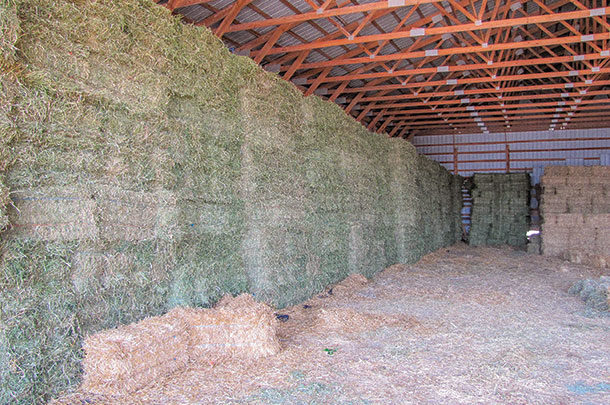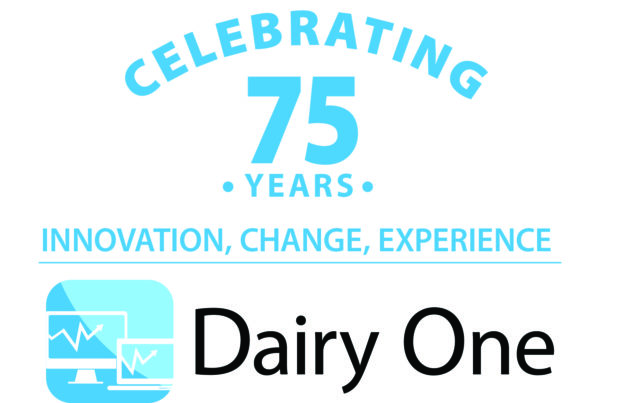To get a sense of the diversity with which hay is handled and hauled currently, I recently conducted a brief informal survey of commercial hay producers that participate in a couple of Facebook groups dedicated to the interest of these growers (“Hay Kings,” 15,000-plus members and “Hay Growers and Custom Operators,” 10,000-plus members).
Demographics
The survey ran for four days, and 125 responses were received from 42 locations across the U.S. and two in Canada (Figure 1).
 Respondents were approximately evenly split into, primarily, producers of cool-season grass (30 percent), warm-season grass (23 percent), alfalfa (23 percent) and grass-legume mixed hay (21 percent), with 3 percent reporting other species as their primary hay crops. The respondents varied considerably in the size of their commercial hay operations, as evidenced by the typical number of square bales they handle on a given day of hay-making (Figure 2).
Respondents were approximately evenly split into, primarily, producers of cool-season grass (30 percent), warm-season grass (23 percent), alfalfa (23 percent) and grass-legume mixed hay (21 percent), with 3 percent reporting other species as their primary hay crops. The respondents varied considerably in the size of their commercial hay operations, as evidenced by the typical number of square bales they handle on a given day of hay-making (Figure 2).

Making hay on smaller tracts of land is much more common in the eastern U.S. compared to the Western states and Canada. Though the sample size of respondents was too small to say conclusively, Western hay growers generally were able to handle twice as many bales per day as Eastern hay growers. This is largely the result of more extensive use of labor-saving hay handling and hauling systems.
Methods of handling bales
There is a large diversity in the methods used to handle square bales out of the field (Figure 3).

Overall, approximately two-thirds of the responding hay producers indicated they primarily used some automated method of handling square bales. Accumulator and grapple systems were popular in nearly every size of operation. The group using accumulators was evenly split between the style of accumulators that scoot the bales along the ground and those designed to keep the bales off the ground as it traverses the field.
As would be expected, a sizable percentage (42 percent) of those operations handling relatively few bales (fewer than 700 bales) per day generally handled these bales by hand. Usually, this involved using a hay wagon behind the baler or throwing the bales from the field up on a truck or trailer to haul the hay from the field.
Yet, even for those who put up fewer than 700 bales per day, a full third of them were handling those bales with some method besides bucking bales by hand. The newer systems that block stacks of square bales into bundles bound with twine or bands (e.g., Bale Baron, Bale Bandit, etc.) were reportedly being used by approximately 15 percent of producers handling more than 1,000 bales per day.
Target bale moisture
Over 80 percent of the growers indicated their target moisture for baling square bales is 15 percent or less (Figure 4).

In fact, 21 percent of the growers stated their target is less than 12 percent. Though this level of dryness is extremely difficult to achieve in the humid eastern U.S., the growers in both the Eastern and Western regions responded similarly to this question.
Bale sizes and dimensions
All but one of the respondents were predominantly making two-string square bales (14 inches by 18 inches) with bale lengths varying from 30 to 40 inches. On average, two-string bales weighed 55.5 pounds per bale with a density of 9.7 plus or minus 0.5 pound per cubic foot of bale on an “as-fed” basis.
Over 70 percent of the respondents indicated their bales were 40 to 60 pounds per bale. However, about 5 percent of the respondents reported bales weighing 80 pounds or more, with one of those making three-string bales.
Selling by the bale or by the ton
This wide range in bale weights complicates the age-old question of whether to buy or sell hay by the bale or by the ton. Over 75 percent indicated they predominantly sell hay by the bale, while around 12 percent usually sell by the ton, with the remainder selling about the same by the ton as they do by the bale. On this issue, there was a disparity among the eastern and western U.S. growers.
Of those west of Interstates 29 and 35, all the growers said they sell hay exclusively by the ton. In contrast, there was only one grower east of that line who said they sold hay exclusively by the ton.
Hauling square bales
Eighty percent of those responding indicated they frequently haul or load flatbed trailers with their square bales. On average, these growers indicated they average just over 10 bales per foot of trailer length. Just under half of the respondents indicated they load 53-foot semi-truck trailers for hauling hay long distances. Those making two-string bales under 60 pounds per bale use 525 to 756 bales to make a load, for an average weight per load of nearly 32,000 pounds.
By hauling these smaller bales, one might be able to fill more than 95 percent of the 4,054.5 cubic feet in the interior of a standard 53-foot van. However, these smaller bales are lighter and result in a load far below the 45,000-pounds-per-load limit for cargo in most states.
Those making slightly longer and heavier bales (60 to 80 pounds) indicated they ranged from 430 to 640 bales per load. Though they loaded fewer bales, they averaged over 36,000 pounds per load. This has major implications for producers selling hay by the bale or by the ton, as they must factor their shipping costs into their bale size strategy.
What may change in the future?
Much has changed in the hay business over the course of the last 20 years. Small square bale-handling technology continues to evolve. Increases in bale density and advances in bale-bundling systems are likely to further increase the efficiency of handling and transporting small square bales.
Though this is a small survey, perhaps it will provide a reasonable benchmark by which we can assess changes in the industry over the next 20 years. ![]()
PHOTO: Covered hay stacks. Photo by Chris Geralds.
If you’d like to weigh in with your answers, go to Handling Square Bales to take the survey.

-
Dennis Hancock
- Professor and Extension Forage Agronomist
- University of Georgia
- Email Dennis Hancock












